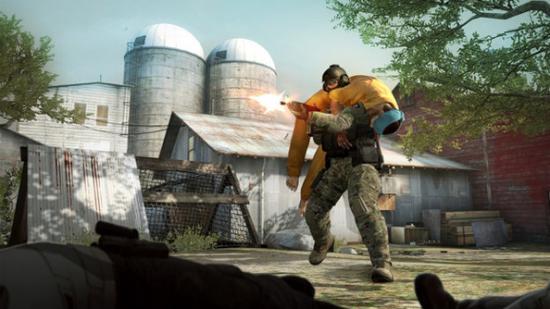Bridal Bliss Insights
Your go-to blog for all things weddings, trends, and bridal elegance.
Hostage Hustle: Surviving the Twists and Turns of CS2 Maps
Master the challenges of CS2 maps with our ultimate guide! Uncover secrets, strategies, and tips for surviving every twist and turn.
Top 5 Essential Tips for Navigating CS2 Maps in Hostage Situations
In Counter-Strike 2 (CS2), effectively navigating maps during hostage situations can be the difference between victory and defeat. Firstly, players should familiarize themselves with the specific map layouts, identifying key areas such as bomb sites, hostages' locations, and common player hotspots. Understanding these elements allows for strategic planning and movement, giving teams a tactical advantage. Secondly, communication is paramount; ensuring that team members are on the same page can help in coordinating rescue efforts or defenses. Utilize voice or text chat to call out enemy positions, share map insights, and strategize on-the-fly.
Another essential tip is to use smoke grenades and flashbangs effectively. Deploying these tools can obscure vision and provide a means of safe passage when extracting hostages or advancing towards objectives. Remember to always check your corners and use appropriate movement techniques like crouch-walking to minimize sound and remain stealthy. Finally, practice makes perfect—regularly engaging in matchmaking or private games can help hone your skills in hostage rescue and improve your overall map knowledge. By implementing these tips, you'll enhance your gameplay and significantly increase your chances of success in CS2's intense hostage scenarios.

Counter-Strike is a highly popular first-person shooter game that emphasizes team-based strategies and tactical gameplay. Players can customize their characters with various skins, including unique items like tiger strike gloves, adding a personal flair to their in-game avatars. The game's competitive nature has led to a thriving esports scene, where players compete in tournaments worldwide.
Understanding the Layout: How Each CS2 Map Affects Hostage Survival
In Counter-Strike 2, the layout of each map plays a crucial role in determining the survival of hostages. Different maps present unique challenges and opportunities for players trying to rescue or protect hostages. For instance, maps like Office emphasize tight hallways and numerous corners, making it essential for players to utilize teamwork and strategic grenade throws to navigate through the map effectively. Conversely, more open maps like Vertigo offer varied elevation levels, which can provide a tactical advantage for both the defending team and the rescuers. Understanding these layouts can significantly improve the chances of successfully completing hostage survival objectives.
Moreover, recognizing the layout of a map can also influence player decision-making during critical moments. For example, when defending hostages, it’s vital to control key areas that provide vantage points or choke points to limit enemy movement. In contrast, rescuers should focus on using sound and cover to navigate through the map without being detected. By mastering the intricacies of each map, players can enhance their strategies and ultimately affect the outcome of the match. Therefore, a comprehensive understanding of hostage survival in CS2 is not merely about gameplay mechanics but about acutely recognizing how each map’s layout impacts survival rates.
What Are the Best Strategies for Securing Hostages on CS2 Maps?
Securing hostages in CS2 maps requires a well-thought-out strategy that maximizes your team's potential while minimizing risk. One of the most effective strategies is to establish control zones around the hostage area. This can be achieved by positioning players at key choke points and using utility items like smoke grenades to limit visibility for opponents. Additionally, communication among teammates is crucial; using in-game voice chat or a dedicated channel ensures that everyone is aware of enemy movements and can react quickly to threats.
Another critical aspect of hostage security is map knowledge. Familiarizing yourself with the layout of each map can provide significant advantages, allowing you to anticipate enemy routes and optimize your own positioning. Passive strategies, such as waiting for the enemy to make a move before committing to a rescue operation, can also be effective. Lastly, maintaining a default structure with at least one player watching the hostages while others cover key entries can fortify your chances of a successful defense against potential assailants.